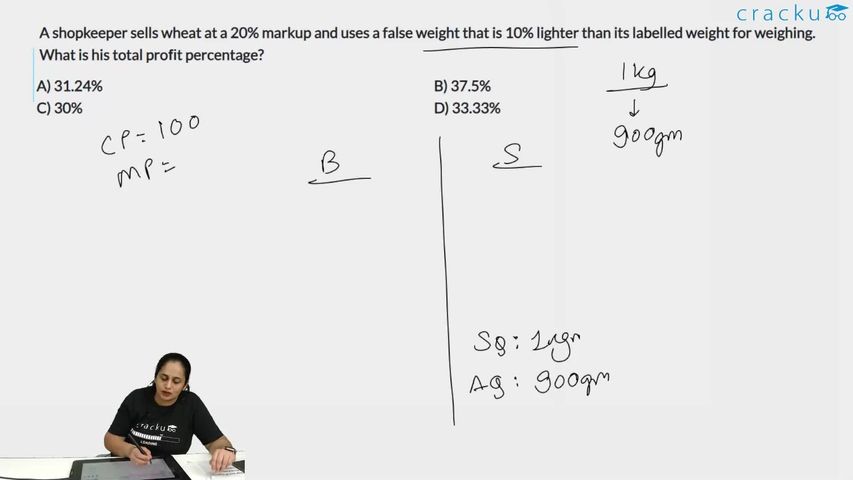A shopkeeper sells wheat at a 20% markup and uses a false weight that is 10% lighter than its labelled weight for weighing. What is his total profit percentage?
Solution
It is given in question that the shopkeeper uses a weight $$10\%$$ less than the actual weight for weighing.
Suppose he is selling $$100$$ gm wheat.
But in reality he sells $$100\left(1-\dfrac{10}{100}\right)$$ gm = $$90$$ gm wheat
So on every 90 gm wheat sold, he is making a profit of $$(100-90)=10$$ gm of wheat.
So profit percentage will be = $$\dfrac{10}{90}\cdot100$$ = $$\dfrac{100}{9}\%$$
Also, he is initially making a profit of $$20\%$$
So, overall profit percentage = $$\left(20+\dfrac{100}{9}+20\cdot\dfrac{100}{9}\cdot\dfrac{1}{100}\right)\%$$ (Using successive profit percentage formula)
So, overall profit percentage = $$33.33\%$$
Video Solution

Click on the Email ☝️ to Watch the Video Solution
Create a FREE account and get:
- Free SSC Study Material - 18000 Questions
- 230+ SSC previous papers with solutions PDF
- 100+ SSC Online Tests for Free

